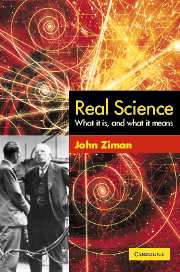Book contents
- Frontmatter
- Contents
- Preface
- 1 A peculiar institution
- 2 Basically, it's purely academic
- 3 Academic science
- 4 New modes of knowledge production
- 5 Community and communication
- 6 Universalism and unification
- 7 Disinterestedness and objectivity
- 8 Originality and novelty
- 9 Scepticism and the growth of knowledge
- 10 What, then, can we believe?
- Endnotes
- Bibliography and author index
- Index
2 - Basically, it's purely academic
Published online by Cambridge University Press: 24 August 2009
- Frontmatter
- Contents
- Preface
- 1 A peculiar institution
- 2 Basically, it's purely academic
- 3 Academic science
- 4 New modes of knowledge production
- 5 Community and communication
- 6 Universalism and unification
- 7 Disinterestedness and objectivity
- 8 Originality and novelty
- 9 Scepticism and the growth of knowledge
- 10 What, then, can we believe?
- Endnotes
- Bibliography and author index
- Index
Summary
Framing the indefinable
We encounter science as a natural kind, not as an abstract category. In other words, like a chair, or a tiger, or a city, we recognize it when we come across it, without having to refer to an explicit formula. Indeed, such a formula is not feasible. It would not only have to be elaborate enough to indicate that science has many different aspects – institutional, mental, material, and so on. It would also have to be broad enough to extend over many different instances of scientific activity, from classifying beetles to theorizing about black holes, from recording folk tales to mapping the human genome, from ancient Chinese medicine to modern Japanese pharmacology, from explaining earthquakes to failing to explain inflation.
A catalogue of all these aspects and instances would obviously be quite unmanageable. It would merely demonstrate that science is too diverse, too protean, to be captured in full by a definition. Moreover, any such definition would pre-empt the outcome of our enquiry. By telling us in advance what science is, it would effectively determine what we would later surely find. We may be very well informed about science, and have a very good idea of various features that are typical of it, but we must be careful not to insist that any of these features are invariable or definitive.
- Type
- Chapter
- Information
- Real ScienceWhat it Is and What it Means, pp. 12 - 27Publisher: Cambridge University PressPrint publication year: 2000



